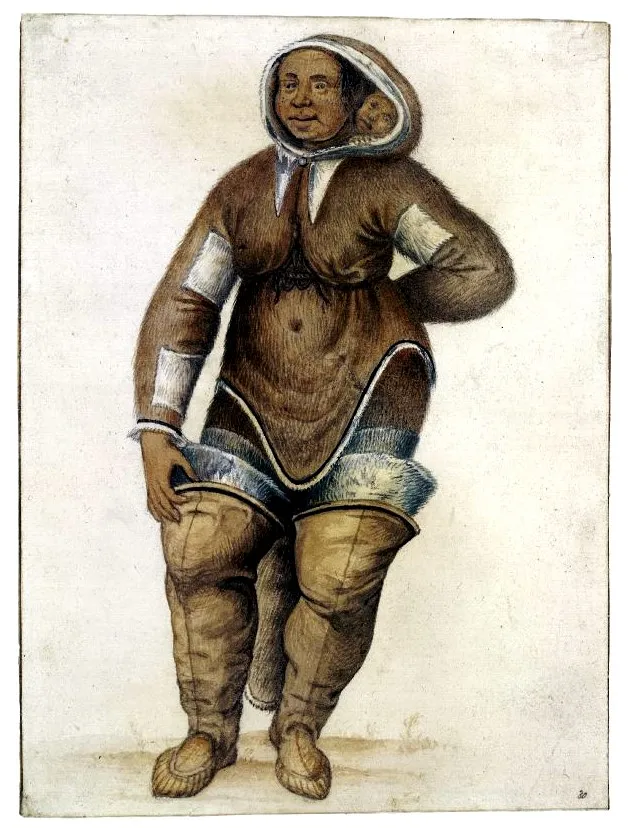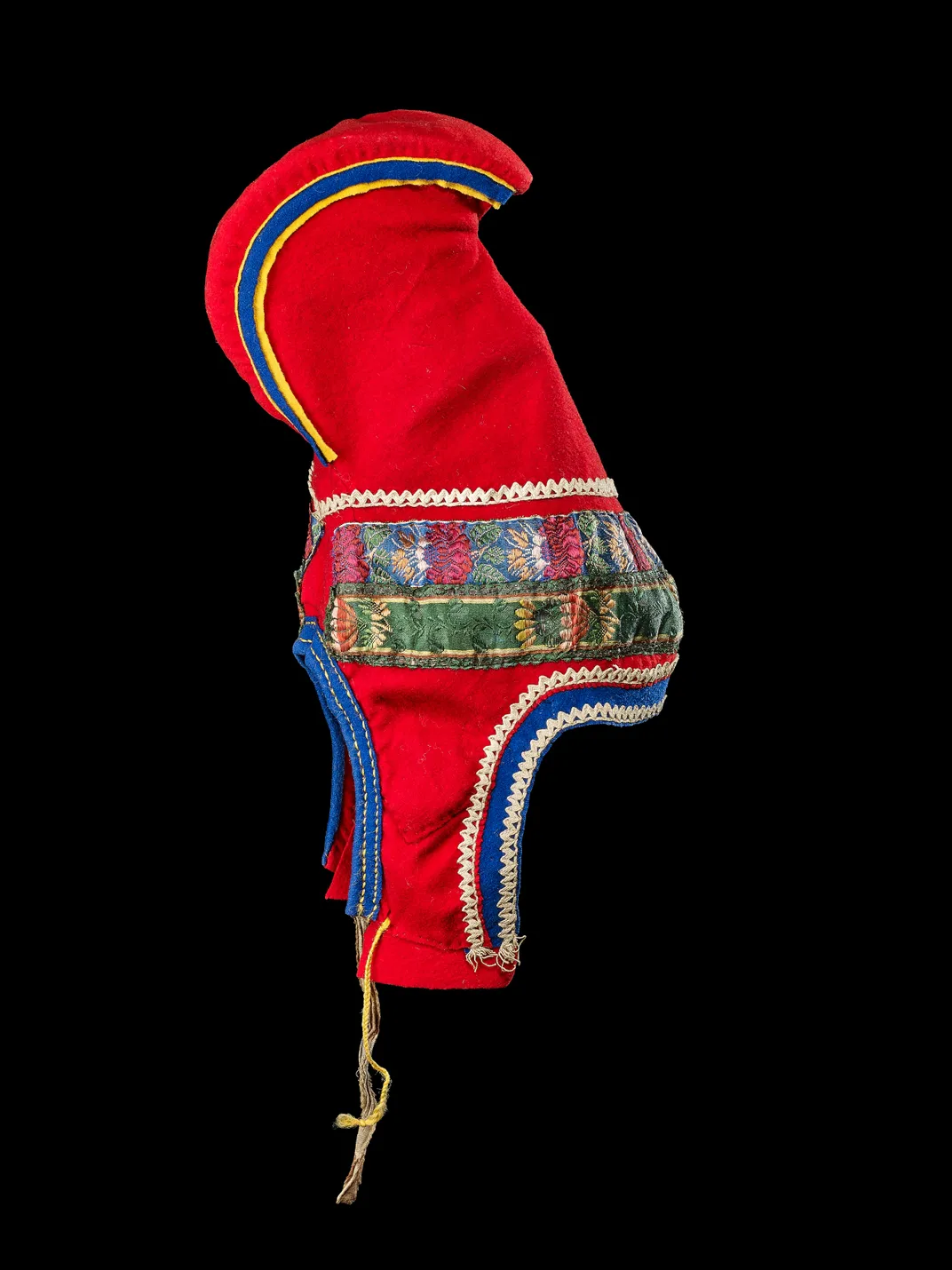How Indigenous Peoples Adapted to the Arctic’s Harsh Climate
A new exhibition at the British Museum spotlights an ingenious way of life threatened by global warming
:focal(3651x2307:3652x2308)/https://tf-cmsv2-smithsonianmag-media.s3.amazonaws.com/filer/12/e0/12e050b7-8802-4762-bac8-350732e014e3/umiaq_and_north_wind_during_spring_whaling_by_kiliii_yuyan.jpg)
Imagine an icy winter with temperatures below -30 degrees Fahrenheit. Animals migrate south en masse, the days grow dark as the sun hangs low on the horizon and snow lingers on the ground for months.
For the 400,000 Indigenous people living in the Arctic, this scenario reflects the reality of life in one of the world’s harshest climates. To survive in this environment, residents have had to get creative—a fact exemplified by the British Museum’s latest exhibition, “Arctic: Climate and Culture.”
Per the London museum’s website, the show—created in direct collaboration with Arctic communities—highlights Indigenous peoples’ ingenuity through artifacts including a centuries-old sealskin whaling suit, brightly beaded snow goggles and a wolverine fur–lined parka. In addition to presenting examples of Arctic cultures’ resilience, the exhibition places a stark focus on ice loss, erratic weather and other effects of climate change that threaten Indigenous communities’ way of life.
As Jonathan Jones writes for the Guardian, one of the around 280 items featured in “Arctic: Climate and Culture” is a 16th-century drawing of a warmly dressed Inuit woman holding her baby, who peeks out through a small opening in the hood. A nearby video shows how Arctic women use similar parka hoods to carry children today. The juxtaposition is striking, helping viewers understand why such objects have a prevailing usefulness.
The artifacts on view are rooted in tens of thousands of years of history. According to a British Museum blog post, recent archaeological finds testify to a Paleolithic settlement established near the Yana River in northeastern Siberia some 30,000 years ago. The site’s prehistoric residents hunted megafauna such as woolly mammoths and created bone and ivory artifacts, including weapons, sewing needles and bowls.
Per a statement, a recurring theme of the exhibition is Arctic peoples’ transformation of “traditional heritage to meet contemporary needs and safeguard their culture.“
Reviewing the show for the Evening Standard, Nancy Durrant points out that the region’s Indigenous inhabitants “have evolved their way of life over 30,000 years in harmony with the seasons and the flora and fauna with which they share this vast expanse.”
Though the specifics of these ecological interactions have changed over time, the basic premise remains the same, she adds: “They kill [animals], but they respect and sustain them.”
To make the most of scarce resources, Arctic peoples use every bit of the animals they hunt, transforming narwhal and caribou bones into sleds, salmon skin into bags, and seal guts into waterproof parkas.
“[D]espite the foreboding we feel when we think about the Arctic, here is a heartening encounter with a radical alternative to modern living,” writes Jones for the Guardian. “… Everybody makes stuff. Everyday objects are turned into things of beauty and magic.”
Climate change is an ever-present specter in “Arctic: Climate and Change.” One display detailed by the Evening Standard visualizes how quickly sea ice is melting. Other immersive photographs of the region’s contemporary landscape show viewers “exactly what we stand to lose,” in the words of National Geographic’s Gail Tolley.
The Arctic is warming at a rate of almost twice the global average, according to the World Wildlife Fund. Between 2018 and 2020, the Geological Survey of Denmark and Greenland reported in September, the region’s largest ice shelf shrank by almost double the size of Manhattan. Per the British Museum, scientists predict that the Arctic will be “ice-free” in the next 80 years.
But the exhibition doesn’t focus solely on the devastating effects of climate change; instead, it strikes a surprisingly optimistic tone, outlining a novel approach to contemporary living.
“The show directly addresses the essential question of how humans can live with the impacts of extreme weather,” says the museum’s director, Hartwig Fischer, in the statement. “The future and past come together in the present, united by the shared experiences of Arctic peoples.”
“Arctic: Climate and Culture” is on view at the British Museum in London through February 21, 2021.
/https://tf-cmsv2-smithsonianmag-media.s3.amazonaws.com/accounts/headshot/Isis_Davis-Marks_thumbnail.png)
/https://tf-cmsv2-smithsonianmag-media.s3.amazonaws.com/filer/61/63/6163e692-5ae7-4bd9-ba97-d0c3fd6fa7ac/childs_all_in_one_suit.jpg)
/https://tf-cmsv2-smithsonianmag-media.s3.amazonaws.com/filer/3f/74/3f745a8b-82d7-4e63-ac06-9764f27f3be2/screen_shot_2020-10-23_at_35157_pm.png)

/https://tf-cmsv2-smithsonianmag-media.s3.amazonaws.com/filer/68/03/680325dd-d8fd-4f30-ab14-291a293e0bdc/sledge.jpg)

/https://tf-cmsv2-smithsonianmag-media.s3.amazonaws.com/accounts/headshot/Isis_Davis-Marks_thumbnail.png)